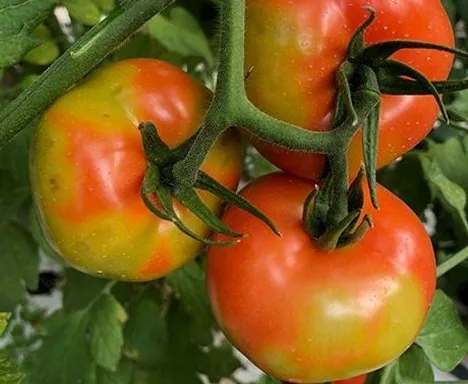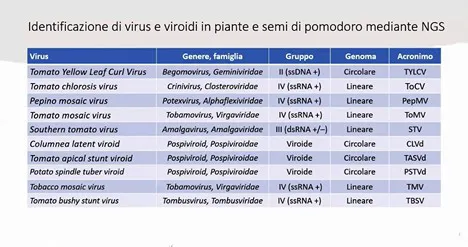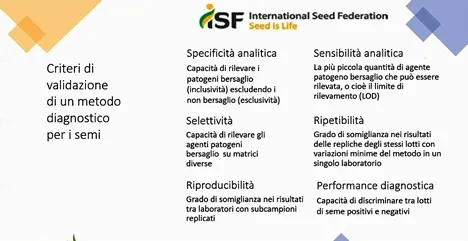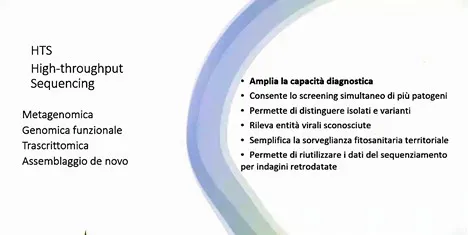Science and the authorities addressed the intercontinental phytosanitary problem of the 'Tomato Brown Rugose Fruit Virus'. The webinar was attended by many operators in the sector, who had the opportunity to learn about the most recent developments in the field directly from the researchers involved in the fight against the virus.
 Franco Celestre
Franco Celestre
The participation of the Institutions involved the presence of several parliament members and the new Regional Councillor for Agriculture, Tony Scilla, as well as Dario Cartabellotta, General Manager of the same Council.

The President of the Agronomists' Association of Ragusa, Franco Celestre, introduced the event, followed by the institutional greetings of MEPs Stefania Campo, Giorgio Assenza, Orazio Ragusa and Nello Dipasquale, who each in turn expressed their support for the entire sector.
The programmed speeches of the conference entitled The tomato supply chain in the light of ToBRFV are available at this link. The first one was presented by Antonino Catara, former professor of Virology and Plant Pathology at the Faculty of Agriculture of the University of Catania and now scientific director of the AgroBioTech laboratory.
 Antonino Catara
Antonino Catara
After providing an overview of viruses and their transmissibility in plants in general, Catara focused on the main viruses in vegetable crops and particularly in tomato, focusing on TBRFV.
 “Viruses are among the main limiting factors in crops as they easily adapt to different environmental conditions. In the case of vegetable crops, they spread internationally through plant and seed commerce. Viruses are also more easily transmitted in greenhouses, thanks to the density of planting and intensive crop cycles. The most feared are those transmitted by contact and by seed. Because of their submicroscopic size, they require accurate detection methods and highly trained personnel,” explained Catara.
“Viruses are among the main limiting factors in crops as they easily adapt to different environmental conditions. In the case of vegetable crops, they spread internationally through plant and seed commerce. Viruses are also more easily transmitted in greenhouses, thanks to the density of planting and intensive crop cycles. The most feared are those transmitted by contact and by seed. Because of their submicroscopic size, they require accurate detection methods and highly trained personnel,” explained Catara.

Catara outlined a number of practical proposals based on the importance of healthy plant material in order to obtain adequate production results and reduce the risk of introducing new viruses.
"It is necessary to develop a broader phytopathological system to be shared between operators, technicians and researchers, in order to create a knowledge base that facilitates diagnosis and prevention. We also need a network like the one set up in the NetLab project (see FreshPlaza of 02/26/2021) that shares HTS technology supplemented by confirmation tests with other methods. This will help understanding the current scenario, which will enable more in-depth and thorough screening. It will also require a validation process in accordance with EPPO standards, where the authorities will be provided with feedback useful to revise some measures. Once processed, such results will lead to a territorial monitoring plan that will be conducted jointly with the accredited laboratories and mini-specialized laboratories (envisaged by the project), under the direction of the Regional Phytosanitary Service," concluded Catara.
 Councillor Scilla declared his support for the producers and expressed his willingness to help the researchers in the field. This was followed by a scientific contribution by Walter Davino, professor at the University of Palermo (SAAF Department), who described the situation two years after the introduction of the Tomato Brown Rugose Fruit Virus in Sicily (see related article).
Councillor Scilla declared his support for the producers and expressed his willingness to help the researchers in the field. This was followed by a scientific contribution by Walter Davino, professor at the University of Palermo (SAAF Department), who described the situation two years after the introduction of the Tomato Brown Rugose Fruit Virus in Sicily (see related article).
 Tony Scilla
Tony Scilla
"First of all it is a virus born from the seed, which means that it is carried by the seed. It can be located in the tegumental tissues or in the endosperm, but never in the embryo. Infection of new seedlings is a random event, with an incidence of 2.8%, but it affects production, with a very high risk factor. We have observed what happens in a nursery with this seed born virus, which spreads exponentially, being transmitted by contact between plant and plant. In this case, the sowing machines are contaminated and in turn become carriers of further infection. The only effective means to clean up the facilities is to use 2.5 per cent bleach (NaClO), said the virologist. (Continue reading the related article here).
